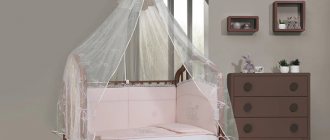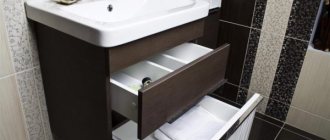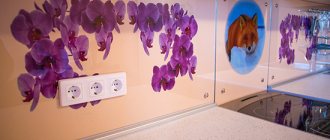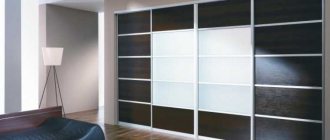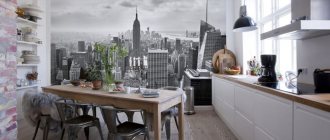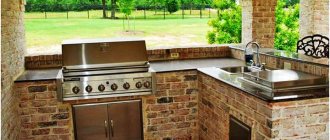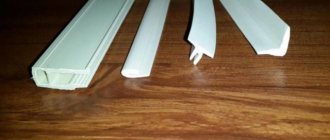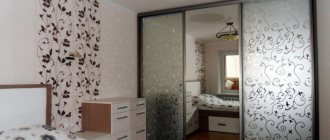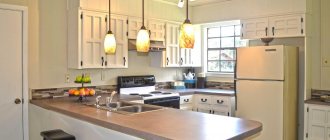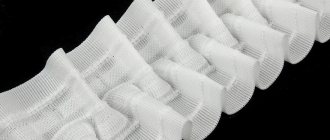35558
During the production and assembly of various furniture, numerous fasteners are used. They have a certain shape, size and other parameters. When creating interior items, a furniture corner is often used, which is a consumable material in production and belongs to the basic fittings. With the help of a high-quality corner, two flat pieces of furniture are connected together, and they can be made of metal or wood.
Types of fastenings
Conventionally, shelf supports are divided into two large groups: visible fasteners and hidden fasteners. The first type often has an original appearance, complemented by forged elements or other decor. Also, visible fasteners can have a minimalist design. As for hidden holders, they are optimal for wooden shelves. Due to the invisible fastening, it will seem that the shelf is simply glued to the wall. At the same time, it will be able to withstand heavy loads. For shelves made of other materials (for example, metal), hidden fastenings are used quite rarely.
There is a special type of shelf holders: long side strips in the shape of a parallelepiped, mounted on the wall. The shelves are fixed (inserted) between the slats. Side holders are suitable for making a stylish hanging rack.
Hidden
You can hang shelves in the house so that the fastenings remain invisible and do not interfere with the attractiveness of the mounted element. There are different fasteners for hidden installation:
- Flat hinges.
They are fixed on the shelf with nails or glued to lightweight products. To hang a shelf, screws are screwed into the wall under the installed hinges. Next, the loops are put on the protruding screw heads.
- Metal shelf holders-pins.
They consist of a long part that is recessed into the wall, and a short front part that is inserted into the shelf. Initially, corresponding holes are prepared for the pins on the wall and in the product. Sometimes steel threaded rods are used instead of conventional shelf supports.
Brackets, fasteners, corners and hinges
Visible shelf mounts are made of metal and plastic (may have a metal base). The following visible shelf supports are distinguished:
- Brackets.
Depending on the purpose and expected load on the product, the brackets used can take the form of small shelf holders with a prepared hole for installing a shelf (for example, pelicans). For heavy attachments, T-shaped fasteners are used.
- Corners.
Furniture corners are attached from underneath to the shelf, and are also mounted on the wall itself. They can be an L-shaped fastener or a curved, decorated arc.
- Loops.
Furniture hinges for spacious shelves are only slightly visible above the products. Unlike thin analogues, for hidden installation they are thicker and can withstand greater loads.
Types of fasteners and ties for furniture assembly
Furniture screed is a special type of fastener that is used exclusively in furniture production. Such fasteners can not only significantly facilitate the process of assembling furniture, but also become “invisible” after installation. In this article we will look at the different types of fasteners used for assembling wooden cabinet furniture.
Confirmat
The most common and easiest to use type of furniture connection is the confirmat, which allows you to fasten several parts together at right angles .
In order to tighten furniture elements, you should drill 2 holes:
- the first - under the head of the confirmat (in one piece),
- the second - under the threaded part (in another part).
In this case, it is recommended to use drills with a diameter of six and five millimeters, respectively, or use a combination drill, which will significantly facilitate the procedure for assembling various sections of cabinet furniture.
As a rule, such fasteners are used to connect parts made of solid wood or chipboard (chipboards), and dowels are used in combination with it, acting as guides.
It is necessary to install the confirmat with great care, preferably manually, since when using a screwdriver there is a high probability that the thread will break the hole and the part will fall out during operation.
In addition, there are different types of fasteners, so after installing it you will need to use special plugs to hide it from prying eyes and give the furniture an aesthetic appearance.
Eccentric coupler
This type of fastening element is used when assembling furniture in a factory environment, due to the complexity of drilling holes for its installation.
The main advantage of the eccentric screed is its concealability, which prevents the appearance of the cabinet or other cabinet furniture from being spoiled.
In addition, unlike the previous type of furniture screed, the presence of such elements allows you to carry out the procedure of assembling/disassembling interior items an unlimited number of times without damaging them, which, you see, is very convenient when moving frequently.
Also, using this fastening method, it is possible to fix the parts at an angle relative to each other.
As mentioned above, the installation of eccentrics is carried out in the conditions of factory furniture production, since the sampling depths for their installation are at least 12 millimeters.
And this despite the fact that the wall thickness of the laminated particle board has a size of 16 millimeters.
Therefore, without the use of special equipment, which is impractical to purchase for a one-time installation of interior items, installation of such fasteners is practically impossible.
Screed for sectional elements
This type of furniture fastener consists of a screw and a nut, with which you can tighten two different sections together, for example, the headboard and base of a bed, or two cabinets.
Today, there are several sizes of such fastening elements, the size of which varies depending on the thickness of the chipboard.
Shelf supports
As you can guess from the name, such fasteners are used to fix shelves (both glass and plastic) of a wardrobe or kitchen cabinet.
Depending on the installation method, shelf holders are divided into open and hidden. The former are mounted directly to the pieces of furniture (after which a shelf is placed on them), while the latter are something like an eccentric coupler.
Shelf holders in the closet, photo:
The fittings that you see in the photo above are intended for attaching shelves in the closet.
Tabletop fasteners
A special type of furniture tie used to secure two parts of a tabletop together. It is used exclusively in the production of kitchen furniture and requires special milling of surfaces before installation.
Selection and methods of fastening
The types of fastening of shelves made of different materials differ significantly. For example, glass or plastic shelves are quite fragile and can be damaged when installed in a hidden installation. The choice of suitable holders is also influenced by the weight of the shelves and the things that will be placed on them. For heavy souvenirs and numerous books, you need to install the most reliable fastenings. Otherwise, it will not be possible to guarantee the integrity of the shelf or the strength of the fixation. When selecting holders, you should take into account the specifics of the fastened product. For corner and non-standard figured shelves (for example, consisting of numerous frames), fasteners are selected that will reliably support their individual parts. Particular attention should be paid to the evenness of the fasteners. Even a slight horizontal misalignment will lead to an uneven load on the product.
Wooden
Due to the ease of working with wood, wooden shelves can be hung on any mounts. The most popular option remains corners and brackets. They are ideal considering the fact that even a small board will have a lot of weight. In addition to the classic options, there is a special hidden method of attaching wooden shelves with an auxiliary beam (not a slat!). It is stuffed into the place where the interior element is installed and acts as a support (base). The shelf itself is fixed to the beam from the inside or from underneath. As for shelves made of derived wood materials (MDF, laminated chipboard), it is recommended to hang them on brackets, hinges or corners. The use of hidden metal rods installed inside the shelf used will lead to rapid destruction of the compressed raw materials.
Glass
For glass shelves, plastic or metal fasteners with plastic, rubberized inserts are used. Most often, glass items are hung on the following holders:
- pelican mounts;
Plastic fasteners include a small top and a wide bottom. They are connected to each other by a short vertical bar. One-piece pelican mounts are mounted on the wall, glass is inserted between their upper and lower parts.
- corner with rubber spacer;
The corner is mounted on the wall, and the glass shelf is screwed to its rubberized spacer.
- shelf holder with suction cup.
It is used for fixing a glass shelf in a cabinet, but is also suitable for mounting the product on a wall. A long mount (it is advisable to choose models with 2-3 suction cups) is mounted to the wall with dowels. The glass is attached to the holder's suction cups.
Corner
Due to their unusual location, corner models are attached to special fasteners. So, for a single shelf, small corners or brackets are used. This method of fastening is also suitable when individual shelves are located at a significant distance from each other. In the bathroom, chrome or plastic shelves can be fixed using suction cups. The non-standard option is attractive for its ease of implementation: the owner does not need to use an auxiliary tool to carry out the work. Another way to fix corner shelves is with common vertical strips. Shelf holders are attached with dowels to adjacent walls. And the shelves themselves are installed directly on the side slats. For this purpose, the vertical strips are supplemented with special protrusions.
Metal
To properly fix a metal shelf, you must first determine its purpose. Forged elements installed in hallways for storing hats are secured with hinges. Light metal shelves for cosmetics in the bathroom are fixed with hinges and suction cups. If an unusual metal shelf will be used to store books or potted plants, then it can be secured using hinges or corners. Installation of products in workshops and garages is carried out using durable metal brackets. The brackets themselves should be mounted on anchors recessed into a wall made of brick, concrete or foam block. Otherwise, it will not be possible to guarantee that the selected fastener will withstand a lot of weight.
Plastic
It is customary to hang plastic shelves on brackets or metal and plastic corners. Initially, plastic shelves have special holes for fasteners, which eliminates the need to drill them yourself. After screwing the plastic shelf to the installed mount, you can use various types of plugs. They will cover the head of the screw. Another type of fasteners used for plastic shelves are pelicans and similar-shaped fasteners made of plastic and metal. The shelf holders are mounted on the wall, and the shelves themselves are inserted into the recesses allocated for their installation. The advantage of this installation method is that it is easy to do it yourself. But when using curly corners or decorated brackets, you can emphasize the design of the installed shelf and complement the interior in an original way.
Hidden fastening of shelves in the closet
If the side of the cabinet remains visible and you want to maintain the integrity of the coating, then you can use hidden, invisible fasteners to install shelves.
Furniture dowels
The most affordable, but no longer as popular as before, is a furniture dowel. It can be made of solid wood and plastic. For better grip, the side surfaces of the dowels are made ribbed.
Why do furniture makers dislike fastening to dowels? Fasteners of this type are quite specific and require gluing. This means that additional clamps (clamps) are needed to fix the position and glue. And, of course, allotted time for the glue to dry. All this slows down the build.
Eccentric coupler
More modern hidden fasteners for shelves and tabletops are an eccentric (minifix) and a conical tie. This type of fastening requires a certain skill for installation and therefore a novice master may get a little stuck. You will have to drill several holes of different diameters for the sleeve and the dowel itself. Moreover, all of them must be performed strictly in the center relative to each other; moving left/right/sideways is unacceptable.
There are many varieties of eccentric couplers, but the principle is always the same. There is a dowel with a head and a sleeve that clings to the head. The sleeve can be rotated (as on minifixes and conical couplers), inserted and snapped into place.
Step-by-step guide for attaching wall mounts
Before you attach the shelf fasteners to the wall, you need to select the right holders and auxiliary tools. For example, for a wall made of brick, cinder block, or aerated concrete, both dowels and anchors are used. Strong walls can withstand significant loads and will not collapse or deform due to a suspended heavy shelf. You can hang shelves of any shape and material on a concrete or brick wall. They can also be loaded with various objects: from books and encyclopedias to all kinds of ceramic and metal figurines. Plaster walls will not be able to support heavy objects. It is better to attach small bookshelves or shelves with light decor and decorations to them. Regardless of the wall materials, installation of fasteners is carried out according to the general scheme:
- Marking the installation locations of holders.
- Installation of fasteners for shelf supports.
- Installation of shelf supports.
- Installation of shelves.
Materials and tools
Depending on the selected shelves, the mountings for them and the features of the wall itself, the installation of interior decor will be carried out differently. To attach shelves to the wall, you may need the following tools and materials:
- nails and a hammer (will help secure small shelves for flower pots or light decor);
- screws (will ensure reliable fixation of medium-weight shelves);
- dowels (suitable for installing bookshelves or shelves for various souvenirs);
- anchors (will allow you to securely fix multi-level wall racks or shelves with heavy weight);
- screwdriver, drill, hammer drill (used for fastening screws or blanks in the wall for dowel holes);
- level and pencil (will allow you to correctly mark the installation locations of fasteners);
- selected fastenings (visible or hidden);
- caps for screws or nails (if their heads are visible on the shelf and should be hidden).
How to attach a holder without visible fastening
Every owner can install a hanging wooden shelf using hidden shelf holders. It is attached according to the following scheme:
- Under the level, exactly mark the places for the metal pins (the diameter of the pins should be at least 10-12 mm).
- Mark the places on the shelf for fastenings. The distance between the fasteners on the wall and the shelf must be the same!
- Drill holes in the wall for fasteners.
- Install fasteners. Additionally, they can be fixed in the holes with liquid nails (but it will be very difficult to remove them from the wall later).
- Drill corresponding holes in the shelf.
- Attach the shelf to the previously mounted shelf holders.
Do-it-yourself glass shelf fastening: features
Using vertical shelf holders will help simplify the installation of glass shelves placed one above the other as much as possible. They are complemented by perpendicular supports and limiters. Such fasteners can withstand heavy weight and eliminate the risk of glass moving. Fastener stops can look like full-fledged roof rails. Mounting them on the wall is quite easy. The following diagram will help you do this:
- Marking the location of fastenings for vertical strips (attached with 3-4 dowels).
- Drilling holes for installing dowels (if you are drilling tiles, use a special drill with diamond coating).
- Installation of dowels.
- Installation of vertical shelf holders.
- Installation of glass shelves.
Fasteners for hanging shelves on a plasterboard wall
Since drywall is a fragile material, shelves need to be fixed to it with special fasteners. Butterfly dowels (also called umbrella dowels, molly) open up during installation into the wall, creating a strong stop. They are ideal for hanging light plastic or wooden shelves. True, to securely fix the fasteners, you should use screws that are 1-1.5 cm longer than the dowel itself. Installation work is carried out as follows:
- Places for attaching shelves are marked under the level.
- Drill holes for the butterfly dowel.
- Dowels are being installed.
- Corners and brackets are fixed.
- The shelf itself is being installed.
It is not recommended to attach heavy shelves to drywall. Due to the large weight of the products, the plasterboard sheet will begin to deform and collapse over time.
Dimensions
The dimensions of the fittings depend on its purpose. The material from which the corner is made and the recommended load also play an important role. The largest parts are considered to be reshaped parts, equipped with an additional hole for a hex bolt.
Advantages of pine furniture board, scope of its application
| Mounting type | Dimensions |
| For light connections (furniture corner for fastening shelves) | 40 × 40 × 20 |
| Angular | 40 × 40 × 60 |
| Reinforced | 60 × 60 × 80 |
| With locknut | 100 × 100 × 100 |
Amateur craftsmen rarely use reinforced corners; this type of fittings is usually needed by construction professionals. If the structure has a specific shape and design, such fasteners are made to order. Sometimes inexperienced craftsmen make the mistake of using reinforced corners to attach standard bookshelves. This will not affect the life of the furniture in any way, but such elements will cost much more, so there is no point in overpaying.
The most common and inexpensive type of fittings is for light connections. Such corners 2 mm thick will be quite enough to fix the shelf if there are no heavy objects on it. This variety is often used when installing open shelving in a living room or nursery.
Angles with a lock nut usually have perforation - local or over the entire surface; accordingly, the dimensions of products of this type may vary.
For light connections
Angular
Reinforced
With locknut
Non-standard fastening solutions
In addition to classic fasteners for shelves, completely unusual holders can be used. They will help diversify the interior and give it some zest. The most original options for mounting shelves include:
- leather belts;
To make holders, two large loops are made from leather belts, which are put on the shelf on the left and right. A metal ring is installed at the top of the folded edges of the loop. The installed rings are placed on screws mounted in the wall.
- ropes;
For this option, you will need to drill a hole in each shelf on the left and right. The shelves are strung on ropes. Each shelf is fixed to a specific section of the rope by tying it under a wooden plank into a knot. Above the top shelf, the rope is tied into a knot and secured with a screw.
- chain;
Hanging shelves on chains is carried out according to a similar scheme with fixation on leather belts. The only difference will be the use of chains of different lengths (the front one will be longer than the back one). Also, the chains themselves will be attached to the shelves, and not just frame them.
- wooden beam (with a section of 5x5 cm).
Initially, hidden fasteners are fixed on the wall. Holes are drilled in pieces of timber for stringing the timber onto wall fasteners. You can mount 2-4 pieces of timber under one shelf.
Fastening shelves in a closet: an overview of possible options
How shelves can be fastened in a closet depends on two factors - the material of manufacture and the optimal installation method. And installation can be different: with through fastening and invisible, with a collapsible (removable) structure and monolithic. Accordingly, the fasteners (hardware) used in each case are different.
